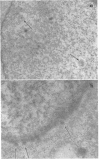Abstract
Hamster cells which transformed after exposure to herpes simplex virus type 2 previously irradiated with ultraviolet light were tested for the presence of hamster leukosis viruses or their virus-specific antigens. Three techniques that were used did not detect the presence of either hamster C-type particles or antigens commonly associated with such structures. The implication of these findings to current concepts of virus oncology is discussed.
Full text
PDF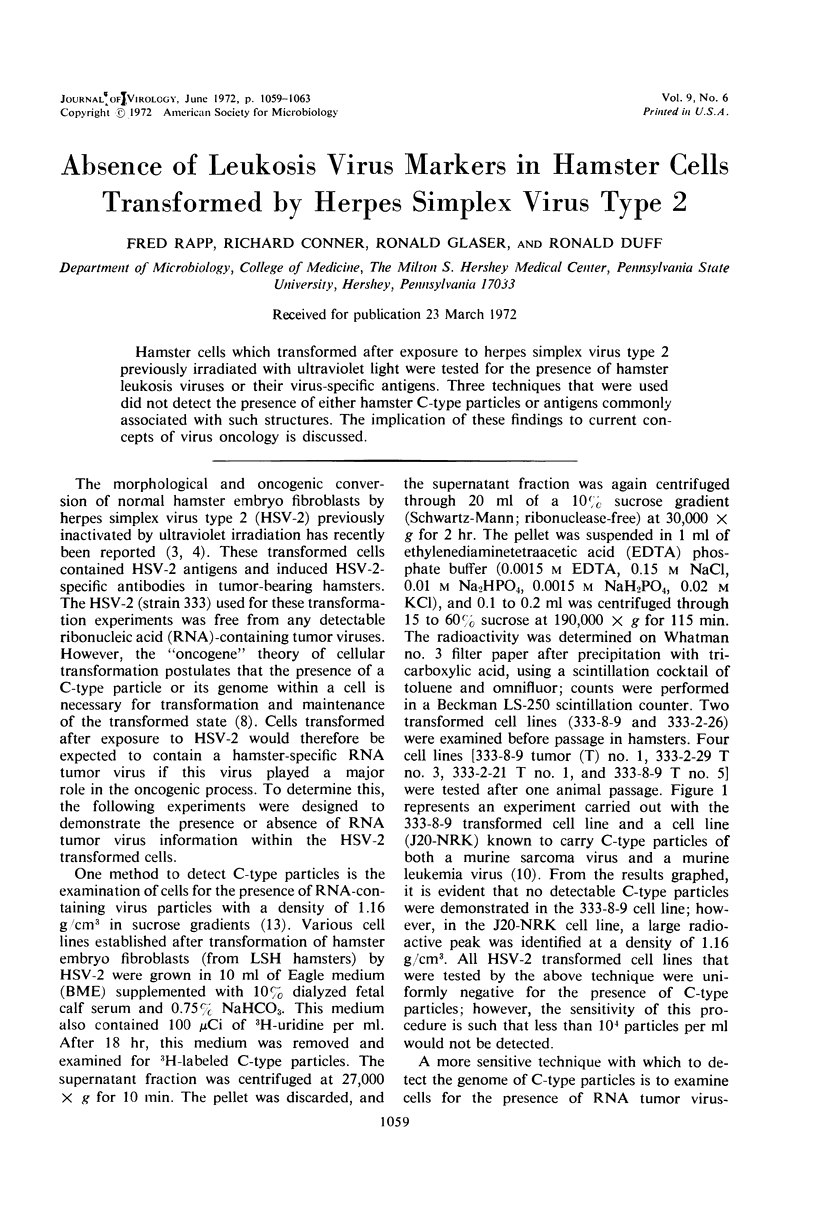
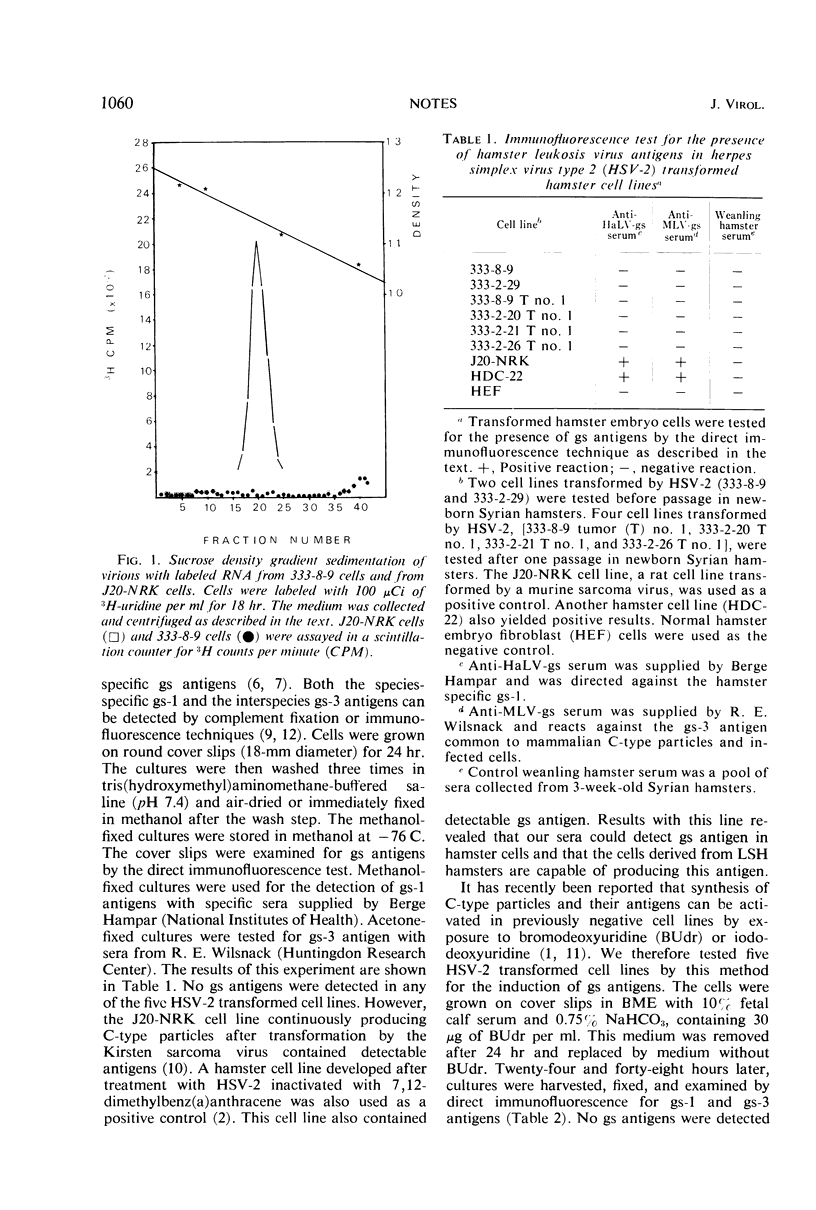
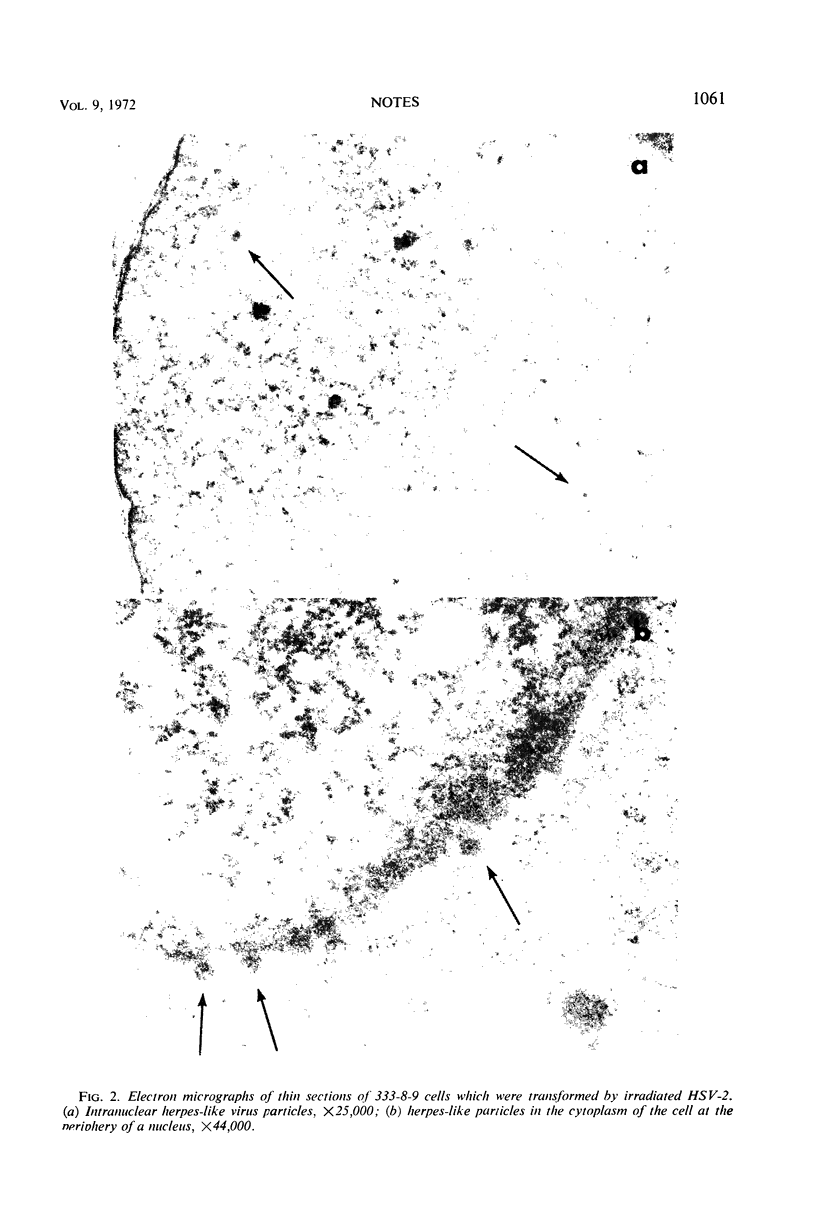
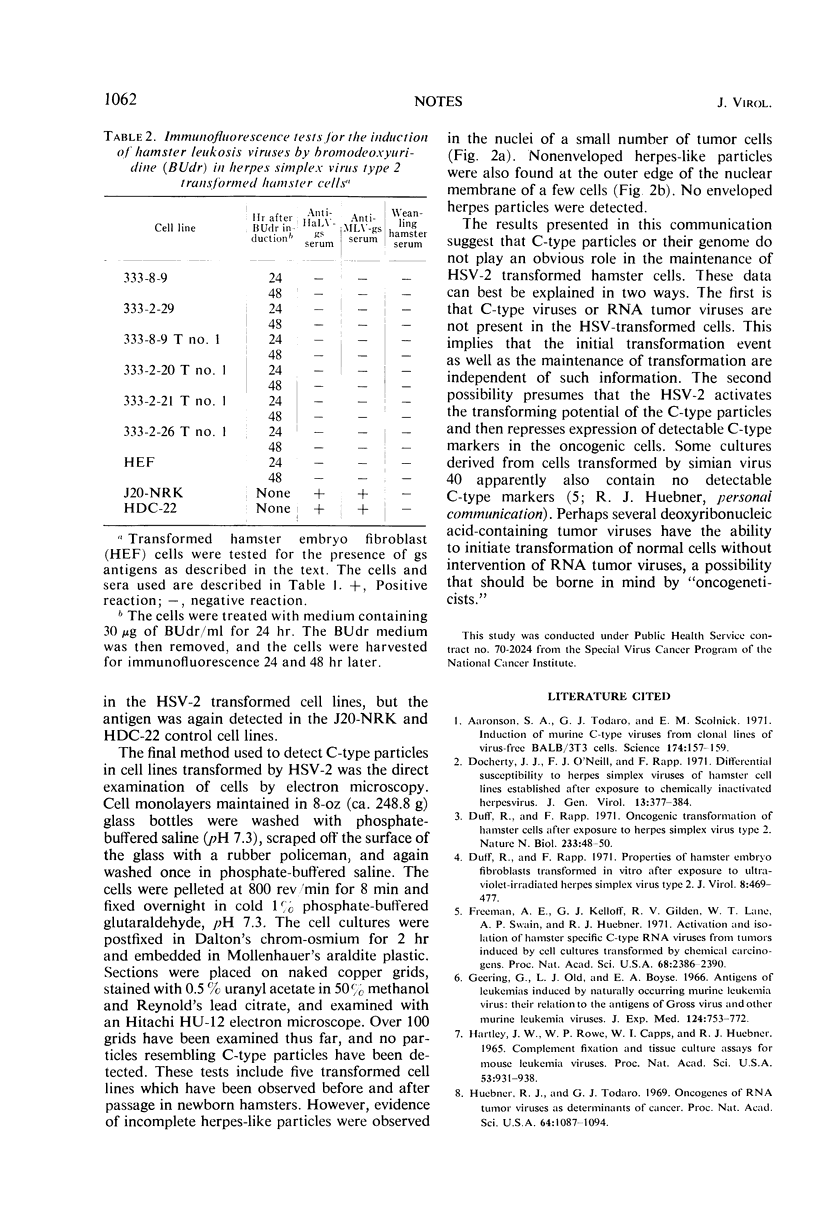
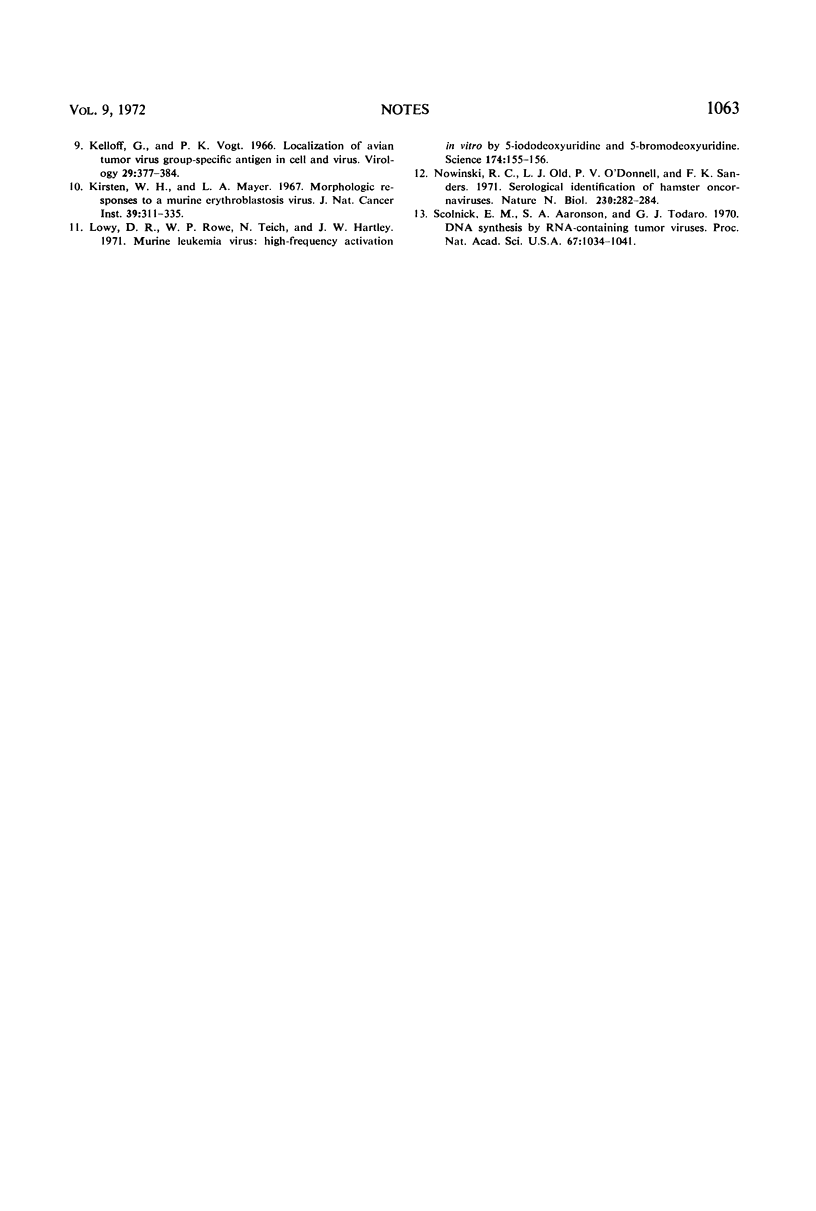
Images in this article
Selected References
These references are in PubMed. This may not be the complete list of references from this article.
- Aaronson S. A., Todaro G. J., Scolnick E. M. Induction of murine C-type viruses from clonal lines of virus-free BALB-3T3 cells. Science. 1971 Oct 8;174(4005):157–159. doi: 10.1126/science.174.4005.157. [DOI] [PubMed] [Google Scholar]
- Docherty J. J., O'Neill F. J., Rapp F. Differential susceptibility to herpes simplex viruses of hamster cell lines established after exposure to chemically inactivated herpesvirus. J Gen Virol. 1971 Dec;13(3):377–384. doi: 10.1099/0022-1317-13-3-377. [DOI] [PubMed] [Google Scholar]
- Duff R., Rapp F. Oncogenic transformation of hamster cells after exposure to herpes simplex virus type 2. Nat New Biol. 1971 Sep 8;233(36):48–50. doi: 10.1038/newbio233048a0. [DOI] [PubMed] [Google Scholar]
- Duff R., Rapp F. Properties of hamster embryo fibroblasts transformed in vitro after exposure to ultraviolet-irradiated herpes simplex virus type 2. J Virol. 1971 Oct;8(4):469–477. doi: 10.1128/jvi.8.4.469-477.1971. [DOI] [PMC free article] [PubMed] [Google Scholar]
- Freeman A. E., Kelloff G. J., Gilden R. V., Lane W. T., Swain A. P., Huebner R. J. Activation and isolation of hamster-specific C-type RNA viruses from tumors induced by cell cultures transformed by chemical carcinogens. Proc Natl Acad Sci U S A. 1971 Oct;68(10):2386–2390. doi: 10.1073/pnas.68.10.2386. [DOI] [PMC free article] [PubMed] [Google Scholar]
- Geering G., Old L. J., Boyse E. A. Antigens of leukemias induced by naturally occurring murine leukemia virus: their relation to the antigens of gross virus and other murine leukemia viruses. J Exp Med. 1966 Oct 1;124(4):753–772. doi: 10.1084/jem.124.4.753. [DOI] [PMC free article] [PubMed] [Google Scholar]
- Hartley J. W., Rowe W. P., Capps W. I., Huebner R. J. Complement fixation and tissue culture assays for mouse leukemia viruses. Proc Natl Acad Sci U S A. 1965 May;53(5):931–938. doi: 10.1073/pnas.53.5.931. [DOI] [PMC free article] [PubMed] [Google Scholar]
- Huebner R. J., Todaro G. J. Oncogenes of RNA tumor viruses as determinants of cancer. Proc Natl Acad Sci U S A. 1969 Nov;64(3):1087–1094. doi: 10.1073/pnas.64.3.1087. [DOI] [PMC free article] [PubMed] [Google Scholar]
- Kelloff G., Vogt P. K. Localization of avian tumor virus group-specific antigen in cell and virus. Virology. 1966 Jul;29(3):377–384. doi: 10.1016/0042-6822(66)90213-3. [DOI] [PubMed] [Google Scholar]
- Lowy D. R., Rowe W. P., Teich N., Hartley J. W. Murine leukemia virus: high-frequency activation in vitro by 5-iododeoxyuridine and 5-bromodeoxyuridine. Science. 1971 Oct 8;174(4005):155–156. doi: 10.1126/science.174.4005.155. [DOI] [PubMed] [Google Scholar]
- Nowinski R. C., Old L. J., O'Donnell P. V., Sanders F. K. Serological identification of hamster oncornaviruses. Nat New Biol. 1971 Apr 28;230(17):282–284. doi: 10.1038/newbio230282a0. [DOI] [PubMed] [Google Scholar]
- Scolnick E. M., Aaronson S. A., Todaro G. J. DNA synthesis by RNA-containing tumor viruses. Proc Natl Acad Sci U S A. 1970 Oct;67(2):1034–1041. doi: 10.1073/pnas.67.2.1034. [DOI] [PMC free article] [PubMed] [Google Scholar]



